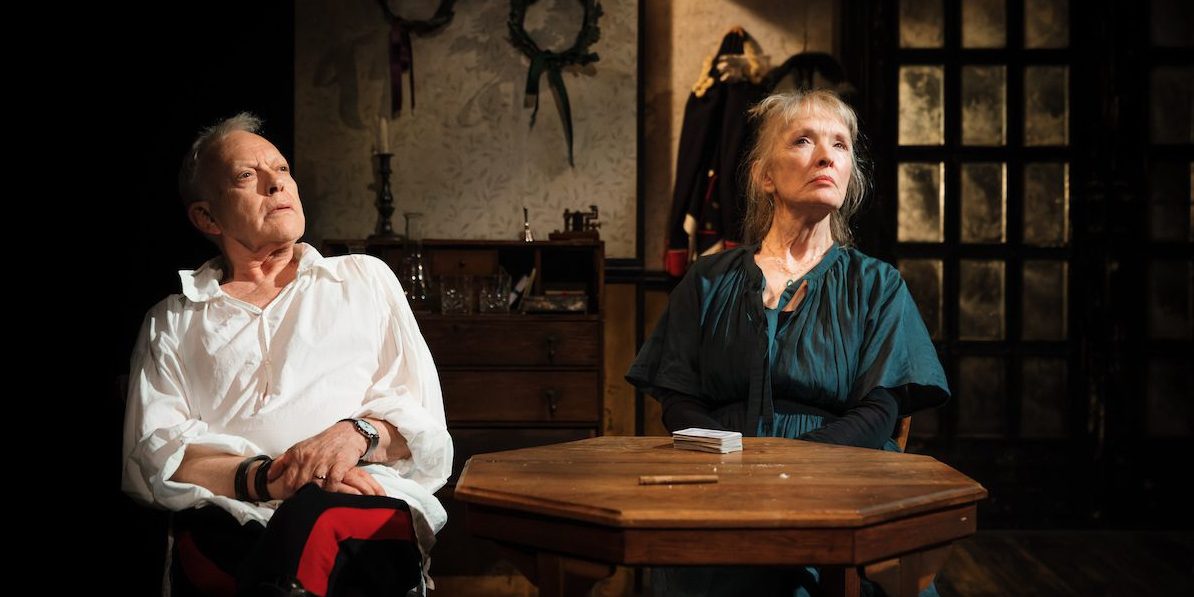Currently at Bath’s Theatre Royal is The Dance of Death, a production adapted from Strindberg’s original play by Rebecca Lenkiewicz. It is one of those shows that seems to have everything it would need to be great – wonderful writer, supported as a co-production by five theatres, directed by Mehmet Ergen, and performed by – well, famous actors. My godmother shot down to the Bristol Old Vic earlier this year when she heard Mark Rylance was performing, but for me, that big moment was seeing Emily Bruni on stage last night, and knowing that she’d been in Peep Show. Whatever – not the point. Despite having all that going for it, The Dance of Death is a depressing watch, and even though it’s a dark, bleak story, I think it might be the way it’s told that leaves this production feeling so strangely empty.
The couple at the centre, Alice and Edgar (Duncan and McRae), are brewing up to their thirtieth wedding anniversary. They live alone, and the way they treat each other seems to be the way they treat everyone else. Their children stay away from them, their maids leave them, and they are left to tear strips off one another. Alice’s cousin (Bruni) comes to stay, and the force field of their horrible dynamic envelops her too. It is a toxic house with dashed dreams and old resentments. Illness and death seeped in through the windows and under the doors, striking fear into them both. There are some beautiful lines in this play, one of which comes from Edgar who talks about knowing well what happens behind closed doors. This is an enduring message from The Dance of Death – it’s amazing what humans can do to each other just within the confines that we create for ourselves.
Despite this, the production never comes alive with tension, and ultimately it is hard to care about where they will all end up. Both central performances have memorable aspects: McRae’s Edgar manipulates those around him while remaining imprisoned in his own life, and Duncan is joyful to watch as she moves around the stage, bringing the humour through Alice’s theatrical personality. The two of them, however, never really seem like the couple they are supposed to be. The room never feels charged with the barbed exchanges of people who are used to communicating with one, two, or three layers of subtext, and moments that should be seismic fall flat. Perhaps this is the production’s melodramatic moments, with accompanying piano and body shaking, and maybe it’s sometimes the language. The script is peppered with swearing that rolls out about as naturally as a first beatboxing attempt, and it often feels out of kilter with the surroundings. Bruni is great to watch as Alice’s cousin Katrin, but even her performance can’t make sense of the mishmash that happens between the three of them. It all seems to come from nowhere, and we are asked to make big leaps on pretty tenuous ground.
It is a short, intimate performance at the Theatre Royal, wonderfully lit by designer David Howe, which should make for a compelling, human-relationship-driven drama. For me, however, The Dance of Death doesn’t quite pull it together, and it is not an absorbing, ‘can’t bear to watch but can’t look away’ play that it feels as though it is looking to be.

